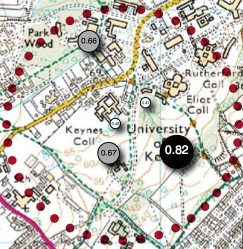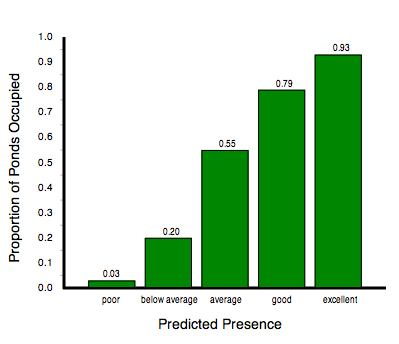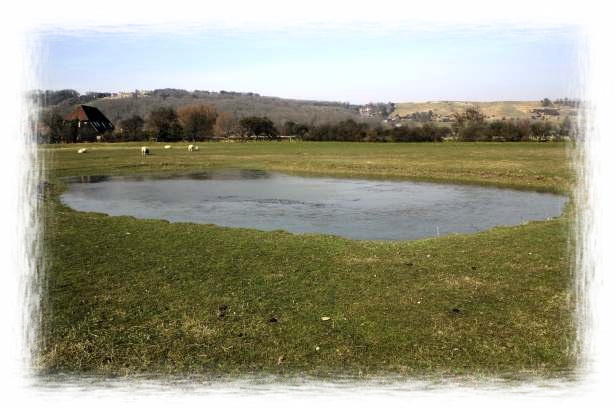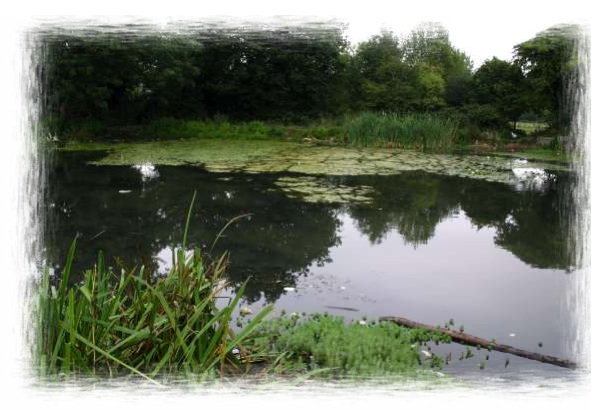The likely presence of great crested newts in ponds can be predicted by examining aquatic habitat features such as the presence of fish, waterfowl and water quality.
For ponds these data are used to calculate a habitat suitability index (HSI; after Oldham et. al. 2000). The HSI is represented by a number from 0 to 1, the higher the number the more likely the pond is to be occupied by great crested newt.
Data collected over several years by Calumma Ecological Services has confirmed that the HSI is a tool that can be used to accurately predict the likely presence of great crested newt. Such information can be illustrated in a Target Map.
 |
Target mapHSI scores can be plotted on a map to illustrate the likely presence of great crested newts in ponds located within the survey area. |
HSI Scores
In order to help with the interpretation of a pond's HSI, Calumma Ecological Services has classified ponds based on their apparent suitability for great crested newt.| HSI Score | Predicted Presence | |
| 0.00 - 0.49 | Poor | |
| 0.50 - 0.59 | Below Average | |
| 0.60 - 0.69 | Average | |
| 0.70 - 0.79 | Good | |
| 0.80 - 1.00 | Excellent |
 |
Likely presence of GCNAs pond quality improves, the number of ponds occupied by great crested newt increases. |
Interpreting HSI Scores
Great crested newts tend to avoid ponds with low HSI scores. Ponds with relatively low HSI scores (poor - below average) typically only support great crested newt when they are located close to another occupied pond. Low scoring ponds are therefore only likely to support great crested newt in areas of high pond density.Great crested newts do not necessarily avoid 'average' ponds, but nor do they actively seek them out. The presence of great crested newt in ponds with an intermediate HSI score appears to be simply down to chance.
Great crested newts appear to prefer ponds with high HSI scores. Ponds with relatively high HSI scores (good - excellent) frequently support great crested newt. Survey work undertaken in SE England indicates that great crested newt are present in more than 90% of excellent ponds!
 |
Field pondGood water quality, combined with a lack of fish helps this pond achieve a HSI score of 0.85. The predicted presence of great crested newt is 'excellent'. |
 |
Fish pondAlthough an attractive amenity feature, the HSI score of 0.50 means that the predicted presence of great crested newt is 'below average'. |
Useful References
Oldham, R. S., Keeble, J., Swan, M. J. S. and Jeffcote, M. (2000) Evaluating the suitability of habitat for the great crested newt (Triturus cristatus). Herpetological Journal, 10, 143 - 155.Copies of this journal can be ordered from the British Herpetological Society.